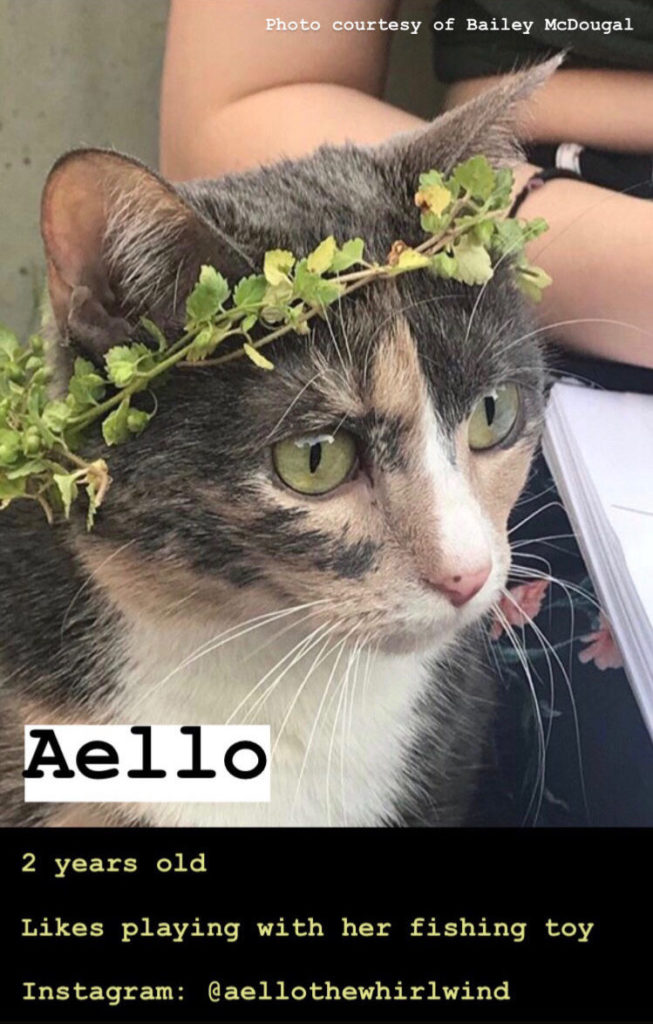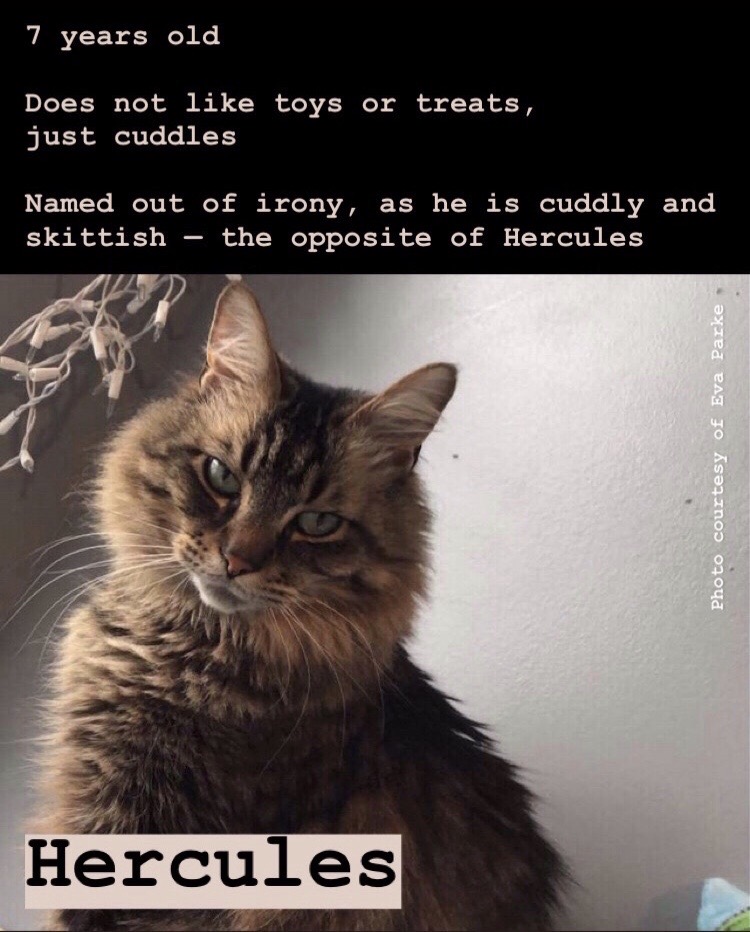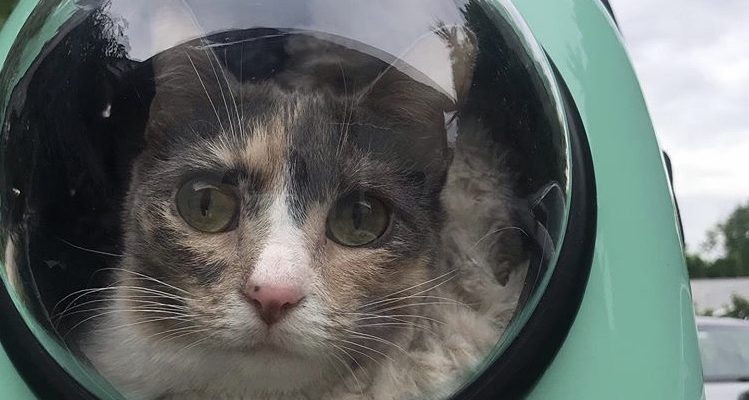By Leah Wilkinson
She enjoys riding around in her “space suit” backpack, but her most favorite place is her dorm room.
It’s just another day on Bellarmine’s campus for Aello the cat.
“She really likes having a small space to reign over,” said owner and sophomore Sophie Amaya.
Aello was a kitten when Amaya got her. Her name is Greek for whirlwind, as Amaya said Aello’s personality can be very high-energy.

Since 2015, Bellarmine has welcomed emotional support animals (ESAs) for students seeking therapeutic benefits.
“Students must submit documentation from a treating professional that demonstrates that the student has a physical or mental disability that substantially limits one or more major life activities and that an ESA would provide some therapeutic benefit for the individual,” said Ronda Purdy, director of disability services.
Additionally, some animals make better emotional support animals than others.
“I definitely don’t think it’s for every cat. It depends on the [animal’s] personality,” Amaya said. “I think [that] should be established before somebody gets an animal for emotional support purposes.”
According to Purdy, there are 12 ESAs on campus — the largest number Bellarmine has had.
“It’s not just that you want a cat and can have a cat. You have to have reasons to have an emotional support animal.” junior Eva Parke said. “People who have an emotional support animal have one for a reason.”
Parke has had her cat, Hercules, on campus since August.
“He can just sense when people are sad,” she said.
Prior to Hercules, Parke had guinea pigs, but said she missed the connection she had with her longtime pet.
“He was a Christmas present when I was in 8th grade, and so he’s gone through a lot of emotional changes with me. Middle school was a pretty rough time for me, 8th grade being the roughest, so that’s made our bond really close,” Parke said.

Amaya said that although she feels there may be a stigma surrounding the topic of emotional support animals, her decision was based on how she would be most successful.
“I think it should be a little more normalized and less kept in the shadows,” Amaya said. “It’s just kind of like ‘Would it be helpful for you to have an animal with you that you have a connection with?’ and it’s like, ‘Yeah, it would be helpful,’ because having an animal is great. It’s a stress reliever.”
Purdy said all schools with residential facilities must have policies and practices in place for the presence of ESAs.
Like Parke, Amaya had Aello as a pet at home before bringing her to campus.
Initially, Amaya wasn’t sure how much extra work would come to Aello, but she said she’s been pleasantly surprised with how easy the process has been for her, as Aello is “pretty chill.”
“These animals make it possible for some students to successfully complete their college career,” Purdy said.
For more information on Bellarmine’s ESA policy, visit https://www.bellarmine.edu/docs/default-source/disability-services-docs/service_and_assistance_animals_policy_as_of_112818.pdf?sfvrsn=ea499381_4

